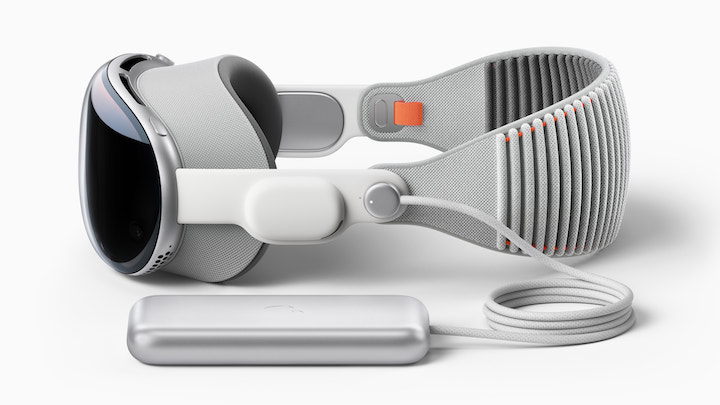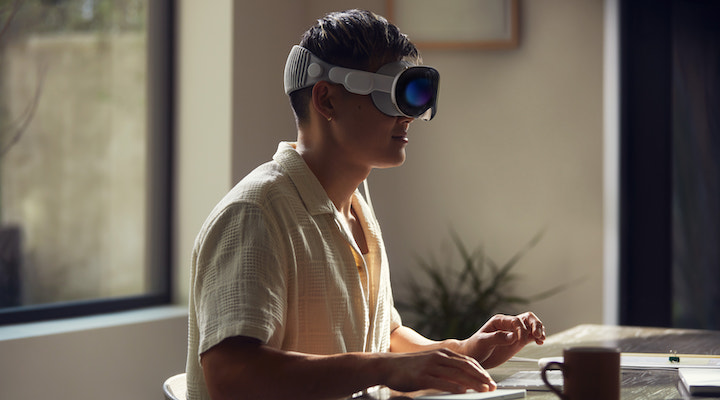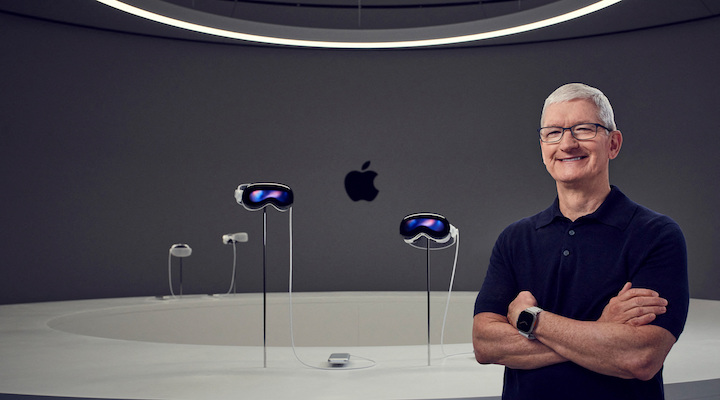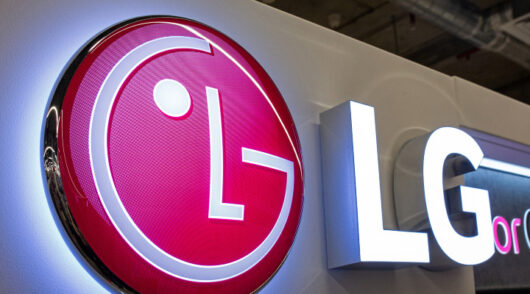The Apple Vision Pro unveiled overnight marks the “true start of an era in which augmented reality devices will become a more mainstream part of consumer and retail markets,” according to one retail analyst.
The Apple Vision Pro, described as the world’s first spatial operating system, will join a nascent AR headset race – but at a launch price of US$3499 is unlikely to find a market beyond core Apple fans and corporate buyers once it hits the market early next year, says Neil Saunders, MD at GlobalData.
Headset devices are not an unfamiliar concept, with companies like Meta trying to commercialise them through metaverse worlds and video games for some years now.
“To most consumers, this is uninteresting and gimmicky and, as such, selling devices has been hard,” said Saunders.
“By contrast, Apple’s new Apple Vision Pro headset is very human-centric. It offers features that enhance communication, entertainment, and working. The applications are practical and will be easily understood by most consumers.”

In addition to that, it will integrate with Apples existing range of devices, software like Facetime, and music and visual services. On top of this, Apple has a very strong distribution system, including its own stores, which will make showcasing the product relatively easy.
“We expect Apple to make inroads into this space in a way that many other firms have failed to do. In doing so it will start to open up a new product line for the electronics market which has, for so long, been in desperate search of innovation and newness,” said Saunders.
Different to conventional AR headsets, Apple Vision Pro is controlled by a user’s eyes, hands, and voice, featuring a fully three-dimensional user interface. The device is integrated into Apple’s ecosystem of apps, games and technology.
Some of the highlighted features include multiple-app using at once, FaceTime video call, and seamless display transition from the real and virtual world.
“Adoption will not be initially on the scale of the iPod or iPhone. The addressable market will be much smaller as some will still see the technology as irrelevant or too advanced, or as a nice to have rather than a must have.”
Early responses from analysts suggest excitement about the technology’s potential, but were cool in terms of its impact on Apple’s bottom line – at least for now.
“Wealthy, techie early adopters will buy the Vision Pro in droves, but still years to move the needle for the mammoth Apple,” said David Rolfe, chief investment officer of Wedgewood Partners that has owned Apple stock since 2005.

He said there was not yet a mass market for the headset but lauded the product’s technological chops. “Apple’s Vision Pro reminds me of the very early days of the personal computer revolution. It took many years for the PC to become a mainstream product. Same with VisionPro.”
Users of the Vision Pro will be able to select content inside the goggles with their eyes, tap their fingers together to click and gently flick to scroll, while also using a three-dimensional camera and microphone system to capture videos and pictures that can be viewed in 3D later.
In its most visually striking difference from Meta’s headsets, the device also has an exterior display that shows the user’s eyes to people in the outside world.
The exterior screen goes dark when a user is fully immersed in a virtual world. When a person approaches a user who is in full virtual mode, the headset will show both the user and the outside person to each other, an augmented reality advancement over Meta’s devices, which show a more basic video feed of the outside world.
“It’s the first Apple product you look through, not at,” Apple CEO Tim Cook said.
- Additional reporting from Reuters.






